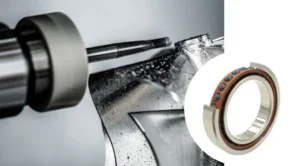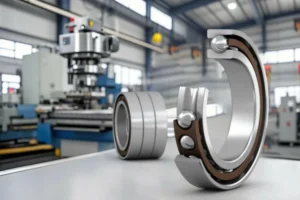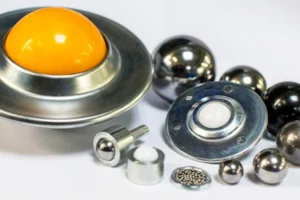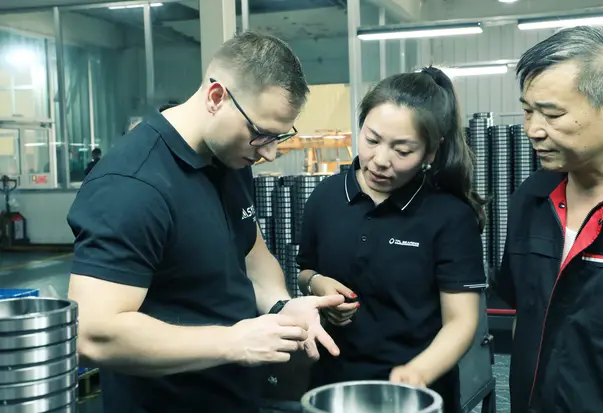Ball bearings are crucial for maintaining the efficient operation of machines. Identifying bearing problems early can prevent significant breakdowns and costly repairs. Approximately half of motor issues stem from faulty bearings. If left unaddressed, minor problems can escalate and lead to system shutdowns. Delaying repairs also reduces the lifespan of the machinery.
Fortunately, new tools can now indicate when ball bearing replacement is necessary to ensure smooth operation. Addressing small issues promptly helps avoid major damage and keeps machines dependable. Timely ball bearing replacement is essential for optimal equipment performance.
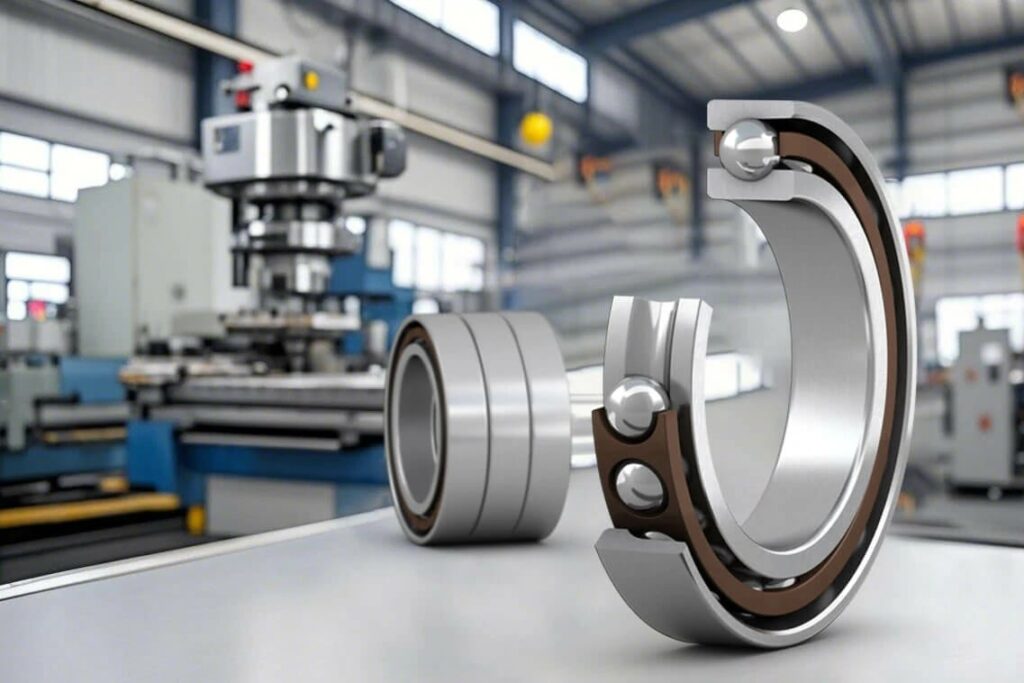
Key Takeaways
- Listen for odd noises like grinding or squeaking. These sounds mean the bearings might fail and need checking right away.
- Look for cracks, dents, or other damage on bearings. Finding problems early stops bigger issues and saves money on repairs.
- Use the right lubricant and put it on correctly. This lowers friction and heat, helping bearings last longer.
- Make sure bearings are installed and aligned properly. Bad alignment causes uneven wear and makes bearings break faster, so always check your setup.
- Teach your team how to care for and handle bearings. Workers who know what to do can find problems early and keep equipment working well.
Symptoms of Bad Ball Bearings
Strange Noises While Running
Strange noises are a common sign of bad bearings. You might hear grinding, squeaking, or clicking sounds. These sounds happen when bearing surfaces are worn or damaged. For example:
- Skidding in bearings makes loud noises, showing possible failure.
- Worn bearings may scrape, causing rotor and stator contact.
Checking temperature can also help. Hot bearings from skidding often mean problems. If you hear strange noises, check the bearings right away to stop more damage.

Too Much Vibration or Sudden Shaking
Too much vibration is another sign of bearing trouble. It happens when parts inside the bearing wear out or shift. Studies show vibration checks work well to find bearing problems early.
Method Used | Results |
|---|---|
Size Analysis | Made a model for vibration under different conditions. |
Found bearing issues using vibration data. | |
Testing | Proved vibrations get worse as damage increases. |
If you feel shaking or notice odd vibrations, check it out. Ignoring these signs can break your equipment badly.

Overheating or Color Changes
Overheating is an early sign of bearing failure. Overheated bearings may change color on their surfaces. This color change shows the bearing got too hot during use.
Evidence Type | Details |
|---|---|
Experiments | Tests on train bearings showed overheating effects. |
Findings | Overheated bearings often had discolored rollers. |
Meaning | Color changes warn you to monitor bearings closely. |
Brown grease or hardened lubricant can also mean overheating. Regular temperature checks can catch these problems early and save money on repairs.
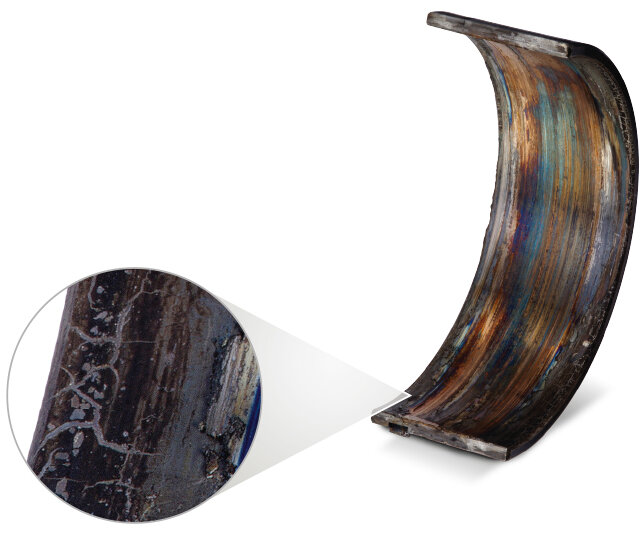
Lubricant Leakage or Contamination
Lubricant problems often mean your ball bearings are wearing out. If grease leaks or gets dirty, it stops reducing friction. This makes the bearings wear faster and fail sooner. You might see grease around the bearing or dirt mixed in.
Dirty grease can come from things like dust, water, or metal bits. These can ruin the lubricant’s structure and make it less useful. For example:
- Dirty grease is a big reason for turbine bearing problems.
- Dust, water, and metal bits often cause grease contamination.
- Outside dirt can ruin the lubricant’s fiber structure.
Tip: Check your bearings often for grease leaks. Clean the area and replace dirty grease quickly to avoid damage.
Ignoring grease problems can cause overheating, more friction, and early bearing failure. Fixing these issues early keeps your machines working well and saves money.

Visible Damage or Wear
Visible damage is an easy way to spot bad ball bearings. Look for cracks, dents, or uneven surfaces during inspections. These problems happen from long use, bad installation, or tough conditions.
Broken bearings can cause shaking, misalignment, and less efficiency. For example, cracks in the bearing can make loads uneven, wearing them out faster. If you see metal flakes or pits near the bearing, it’s breaking down.
To find visible damage:
- Look at the bearing for scratches, dents, or color changes.
- Check if it wobbles or feels loose when running.
- Search nearby for dirt or metal pieces.
Note: Replace bearings right away if you see damage. Using broken bearings can hurt other parts and cause bigger problems.
Regular checks help you find damage early. Fixing these issues quickly makes your equipment last longer and work better.

Diagnosing Why Ball Bearings Fail
Not Enough or Wrong Lubrication
Lubrication is key to keeping bearings working well. Without it, friction grows, causing heat and damage. Finding lubrication problems early can save money on repairs. Strange noises like grinding or squeaking mean the lubricant isn’t working. Over time, this can slow movement and break the bearing.
To stop this, use the right lubricant for your machine. Check often for dried or dirty grease. Hardened or discolored grease means it’s time to fix the problem. Good lubrication lowers friction and cools bearings, helping them last longer.

Dirt or Debris Getting Inside
Keeping dirt out is important for healthy ball bearings. Dust, dirt, and tiny particles can get stuck inside and cause harm. These things ruin the grease, making the bearing wear out faster and possibly fail.
Some facts about dirt problems:
- Dirt is a big reason bearings fail in factories.
- Tiny particles can make bearings wear unevenly and work poorly.
- Dirt often causes odd noises like clicking or scraping.
To stop dirt problems, keep the area clean and seal bearings well. Check bearings often and use good grease to lower risks. Catching dirt issues early avoids costly repairs and machine stops.
Parts Not Lined Up Right
Misaligned parts can hurt bearings badly. Even small misalignment makes bearings wear unevenly. This raises heat and can cause cracks or breaks. Misalignment also slows movement because forces push unevenly on the rolling parts.
Signs of misalignment include strange noises and worn bearing surfaces. Misalignment can bend the bearing holder, making it fail later. In bad cases, rolling parts may speed up or slow down unevenly, stretching or squeezing the cage.
To fix this, align all parts correctly when setting up. Use tools to check alignment and inspect bearings often for wear. Good alignment makes bearings last longer and helps machines work better.
Overloading or Excessive Force
Putting too much weight or force on bearings can cause big problems. If a bearing works beyond its limit, it gets stressed and damaged inside. This damage can show up as dents, cracks, or flakes on the surface. These problems make the bearing work poorly and wear out faster.
Reports from industries warn about overloading risks:
- Too much weight can break bearings and cause early failure.
- Bearings fail when used beyond their limits for weight, speed, or heat.
- Overloading often happens due to mistakes by workers or design errors.
Catching overloading early is very important. You might hear odd noises, feel shaking, or see damage on the bearing. To stop this, always pick bearings that match the weight and conditions they’ll face. Plan well and check bearings often to avoid expensive fixes.
Tip: Use tools to check the weight on your bearings. This easy step helps prevent failures and keeps machines running longer.
Poor Installation or Handling Practices
Bad installation or rough handling can ruin bearings quickly. Wrong installation can cause misalignment, uneven weight, or damage to the bearing. Dropping or mishandling bearings during setup can also weaken them, making them fail sooner.
Studies show how bad practices increase failure chances:
Problem Type | How It Affects Bearings |
|---|---|
Bad Lubrication | Causes friction and raises failure risks. |
Dirt or Contamination | Scratches surfaces and leads to early wear. |
Rough Handling | Creates setup mistakes and damages parts. |
To avoid these problems, handle bearings gently and follow setup instructions. Use the right tools to align and fit them properly. Training workers can also help reduce mistakes during setup and handling.
Note: Even small setup errors can cause big issues later. Always check your work to make sure everything is done correctly.
Signs of Bad Wheel Bearings and When to Fix Them
Constant Noise or Grinding Sounds
Strange noises often mean your wheel bearings are failing. You might hear grinding, humming, or growling sounds while driving. These noises get louder when turning because the pressure increases damage.
If your bearing starts making loud noises, it’s already broken. Dirt or debris is the main reason bearings fail, damaging their smooth surfaces.
Ignoring these sounds can cause serious problems, like total bearing failure. Check your bearings quickly if you hear odd noises.
- Grinding or humming sounds are common warning signs.
- Turning makes the noises louder.
- Fixing the problem early stops bigger damage.
If the noise doesn’t go away, the bearing is likely worn out. Replacing it early keeps your car safe and running well.
Cracks, Pitting, or Metal Pieces
Physical damage is another sign of bad wheel bearings. During checks, you might see cracks, pits, or tiny metal pieces on the bearing. These problems happen from long use, dirt, or too much weight.
Cracks make bearings weaker and easier to break under stress. Pitting and metal flakes show the surface is worn out, making it work poorly. These visible signs mean the bearing needs fixing soon.
To spot damage:
- Look for cracks or uneven spots on the bearing.
- Check for metal pieces or dirt near the wheel.
- Inspect the bearing holder for wear or damage.
Replacing damaged bearings right away stops harm to other parts. Regular checks catch problems early and save money on repairs.
Too Much Heat or Burn Marks
Overheating is a big warning sign for bad wheel bearings. Hot bearings often show burn marks or color changes on their surfaces. This happens because of friction from not enough grease, dirt, or misalignment.
Overheated bearings can break completely if ignored. You might see brown grease or hardened lubricant near the bearing, showing it got too hot.
Signs of overheating include:
- Burn marks or color changes on the bearing.
- Hardened or dark grease near the wheel.
- More friction while driving.
Replace bearings with heat damage right away to avoid worse problems. Using good grease and checking temperatures often helps bearings last longer.
Significant Wear or Looseness
Too much movement in the wheel shows bad wheel bearings. If the wheel moves more than normal, the bearings might be worn or loose. This makes it hard for them to keep the wheel steady. To check, gently rock the wheel back and forth. If it moves too much, the bearings likely need replacing.
Bad bearings can also make your car harder to control. The steering might feel less sharp, or the car could pull to one side. This happens because the bearings can’t spread the weight evenly anymore. Ignoring these signs can damage other parts like the axle or suspension.
To spot wear, look at the bearings closely. Check for cracks, dents, or uneven spots. Listen for grinding or humming noises while driving, as these often mean the bearings are worn. Fixing these problems early saves money and keeps your car safe.
Tip: During maintenance, check if the wheel moves too much. This easy step helps you find wear before it causes bigger problems.
Frequent Failures Despite Repairs
If your wheel bearings keep failing after repairs, something else might be wrong. Bad installation, misalignment, or cheap bearings can cause repeated failures. Make sure the bearings are installed properly and fit your car.
Dirt, water, or debris can also ruin bearings. These things damage the surfaces and shorten their life. Keeping the area clean and using good seals can stop this problem.
Too much weight on the bearings can also make them fail often. Bearings wear out faster when they carry more weight than they should. Always use bearings that match your car’s load and conditions.
Sometimes, other parts like the axle or hub might be damaged. These parts can stress the bearings and make them fail early. Checking the whole system helps fix all problems, not just the bearings.
Note: If failures happen often, find out what’s really wrong. Replacing bearings without fixing the main issue will only cause more problems later.
Tips for Ball Bearing Replacement and Installation
Choose Reliable Bearings for Long-Lasting Performance
Using high-quality ball bearings is essential for maintaining the efficiency and longevity of your equipment. Trusted global brands such as SKF, FAG, and NSK have long been known for their precision and reliability in industrial applications.
TFL Bearings offer a smart solution for businesses looking to balance quality and cost. Engineered to be fully interchangeable with bearings from major global brands, TFL bearings ensure seamless replacement without the need for equipment modifications. This compatibility reduces downtime and simplifies inventory management.
In addition to their compatibility, TFL bearings are cost-effective—making them an ideal choice for operations that require both performance and budget control. Each bearing is manufactured to strict quality standards, helping machines run smoothly while minimizing maintenance needs.
Whether you’re upgrading machinery or performing routine replacements, choosing bearings from trusted names—including TFL—ensures long-term reliability and value.
Tip: Pick brands with proven quality to avoid bearing problems early.
Make Sure Bearings Fit Your Machine
Before buying bearings, check if they match your machine. Bearings come in different sizes and types. Using the wrong one can cause wear or misalignment. Match the bearing’s size, load capacity, and speed limits to your machine’s needs.
For example, fast-moving machines need bearings made for high speeds. Heavy-duty machines need bearings that can handle more weight. Picking the right type stops problems and keeps your machine working smoothly.
Note: Read your machine’s manual or ask an expert to find the right bearing.
Install Bearings the Right Way
Installing bearings correctly helps them last longer. Bad installation can cause damage, uneven weight, or misalignment. Start by cleaning the area to remove dirt. Use the right tools to fit the bearing securely.
Don’t force the bearing into place, as this can break it. Use methods like pressing or heating, depending on the type of bearing. After installing, test the machine to make sure it works well. Good installation prevents frequent replacements and keeps equipment reliable.
Tip: Teach your team how to install bearings properly to avoid mistakes and improve machine performance.
Use the Right Tools and Methods
Using proper tools makes ball bearing installation safe and easy. Special tools prevent damage to the bearing or nearby parts. For example, a bearing puller or installer kit helps remove and fit bearings evenly. These tools spread force equally, avoiding cracks or misalignment.
Tip: Don’t use tools like hammers or screwdrivers. They can harm the bearing and cause it to fail early.
Precision tools, like torque wrenches, tighten bolts correctly. Tightening too much can bend the bearing, while too little can make it loose. If heating or cooling is needed, use temperature-controlled devices. These tools help the bearing expand or shrink evenly, avoiding damage.
Here’s a simple tool checklist:
- Bearing puller/installer kit: Safely removes and installs bearings.
- Torque wrench: Tightens bolts with the right force.
- Micrometer or caliper: Measures sizes accurately.
- Temperature-controlled heater: Helps with thermal fitting.
Good tools make bearings last longer and improve machine performance.
Test the System After Installation
After installing new ball bearings, test the system to ensure it works. First, turn the bearing by hand to check for smooth movement. If it feels rough or stuck, something may be wrong.
Start the machine at a slow speed. Listen for odd noises like clicking or humming. These sounds might mean misalignment or not enough grease. Slowly increase the speed while watching how the system runs.
Note: Check the bearing’s temperature during testing. If it gets too hot, there might be too much friction or not enough lubrication.
Look at nearby parts for wear or stress. Loose bolts, bent shafts, or uneven loads can hurt the bearing’s performance. If everything seems fine, the machine is ready to use.
Testing ensures the bearing is installed properly and avoids future problems. Regular checks after installation can catch issues early and save money.
Preventing Future Ball Bearing Issues
Check Bearings Often and Keep Them Maintained
Regular checks help keep wheel bearings in good shape. Look for cracks, color changes, or grease leaks during inspections. Cleaning bearings removes dirt that can cause problems.
Write down inspection results to spot patterns or repeated issues. Tools like vibration testers make inspections more accurate. Teach your team new ways to check bearings so nothing is missed. Using inspection data helps predict problems early and avoid failures.
Tip: Follow a clear inspection plan to keep equipment reliable. Regular care makes bearings last longer and work better.
Use Correct Lubricants and Apply Them Properly
Lubricants lower friction and stop bearings from overheating. Picking the right lubricant keeps bearings working smoothly. Advanced methods, like special algorithms, check how well lubricants work by looking at many factors.
Method Used | What It Does |
|---|---|
Single Metric Check | Looks at one factor, like wear or friction. |
Multi-Factor Algorithm | Uses many factors to measure lubricant performance. |
Surface Change Test | Checks how friction changes the surface to judge lubricant quality. |
Spread lubricants evenly to avoid dry spots that cause friction. Check often for hardened or dirty grease, which lowers efficiency. Using good lubricants and applying them right keeps bearings running well.
Note: Lubrication needs regular checks. Always verify grease levels and reapply when needed.
Keep the Area Around Bearings Clean
Clean spaces protect wheel bearings from dirt and damage. Dust and debris can get inside and make bearings wear out faster. Keeping the area clean stops these problems.
Seal bearings tightly to block dirt from getting in. Clean the housing often to remove buildup. During checks, look at seals for damage and replace them if needed. A clean workspace helps bearings last longer and improves machine performance.
Tip: Teach workers to focus on cleanliness during maintenance. A clean area lowers the risk of bearing failure and keeps machines dependable.
Avoid Overloading or Misalignment
Too much weight or misaligned parts can break ball bearings. Heavy loads stress the bearings, causing cracks, dents, or failure. Misalignment happens when parts don’t fit correctly during setup or use. This makes bearings wear unevenly, increases friction, and shortens their life.
To stop overloading, use bearings that match your machine’s needs. Check the manufacturer’s guide for weight and speed limits. For heavy-duty machines, pick high-capacity bearings. Inspect your equipment often for signs like strange noises or visible damage.
Misalignment can be prevented with careful installation. Use accurate tools to align parts properly. Watch for uneven wear or vibrations during operation. Fix these problems quickly to avoid worse damage. Regular maintenance also helps keep parts aligned.
Tip: Plan regular checks for overloading and misalignment. Finding problems early saves money and avoids downtime.
Train Personnel on Proper Handling and Maintenance
Teaching your team how to care for ball bearings is very important. Without training, workers may damage bearings or miss warning signs. A trained team can spot problems early and fix them correctly.
Training should cover key topics like setup, alignment, lubrication, and repairs. Workers learn about different types of bearings and how they work. Hands-on practice helps them inspect and fix bearings confidently.
Show your team how to use the right tools and handle bearings gently. Teach them to apply grease evenly and clean the area around bearings. Following these steps prevents damage and keeps machines running well.
Note: Training improves skills and makes equipment last longer. Well-maintained bearings reduce downtime and boost efficiency.
Spotting bad ball bearings early stops expensive repairs and damage. Strange sounds, heat, or worn parts mean problems need fixing fast. Finding causes like wrong alignment or not enough grease avoids early failure and keeps machines working well.
If you need new bearings, install them carefully for best results. Pick strong bearings that fit your machine perfectly. Regular care, like checking and cleaning, makes bearings last longer and keeps equipment reliable.
Tip: Teach workers to notice problems and handle bearings properly. This helps prevent breakdowns and keeps machines dependable.
FAQ
How do you know if a ball bearing needs replacing?
Listen for odd noises like grinding or humming while it runs. Look for cracks, discoloration, or other visible damage. Check if it vibrates too much or feels overheated. If the bearing is loose or worn, replace it quickly to avoid bigger problems.
What tools are needed to install ball bearings?
Use a bearing puller or installer kit to remove and fit bearings safely. A torque wrench helps tighten bolts correctly. Micrometers or calipers measure sizes with precision. Temperature-controlled heaters make thermal fitting easier. Don’t use hammers or screwdrivers, as they can harm the bearing.
How often should ball bearings be checked?
Check bearings regularly, especially during planned maintenance. Look for wear, grease leaks, or dirt buildup. Use tools like vibration testers or temperature monitors to find early issues. Regular checks catch problems early, saving time and money.
Can bad lubrication cause bearings to fail?
Yes, not enough or dirty grease causes friction and heat, which damages bearings. Use the right grease for your machine and spread it evenly. Check grease levels often and replace dirty or hardened grease to keep bearings working well.
How can you stop dirt from ruining bearings?
Keep the area clean and seal bearings tightly. Clean the housing often and replace broken seals. Don’t let dust, water, or debris near the bearings. Good sealing and cleanliness make bearings last longer and keep machines running smoothly.
